[Original by Mariko OMURA, Cambodia Project (November 25, 2019); Translated by E. Miyazaki/ A. Taguchi]
(Continued from Part 2)
The first day of shipping
It was early July 2019 when we shipped our coriander for the first time. Unfortunately, Ms. Chomno was absent for another appointment, and we could not take any pictures of her. Here, we report how Ms. Bopper did it.
We made a video of her journey from the day of the first harvest until the shipping, so please take a look at the video clip. She looks so happy that it makes us smile!
(Video captions)
She lives with her mother.
This reservoir was made with the JVC’s support in 2016.
Ms. Bopper rapidly expanded her house garden using the water from the reservoir and now she can live without buying vegetables.
Currently she is taking the challenge to ship her herbs to a restaurant in Siem Riep. Today is the first day of shipping.
How do you feel after completing your first harvest?
I’m so happy! I can sell them to Siem Riep for the first time!
What are you most happy about?
I am happy to find it went well (because I was worried that no one would want to buy them).
I am willing to grow other vegetables if there are requests.
Heading to the first shipping.
Arriving at the restaurant O’tacos in Siem Riep after driving for just over an hour.
First shipping.
I’m so happy!
My next challenge is to sell other vegetables together as well as coriander.
Her mother.
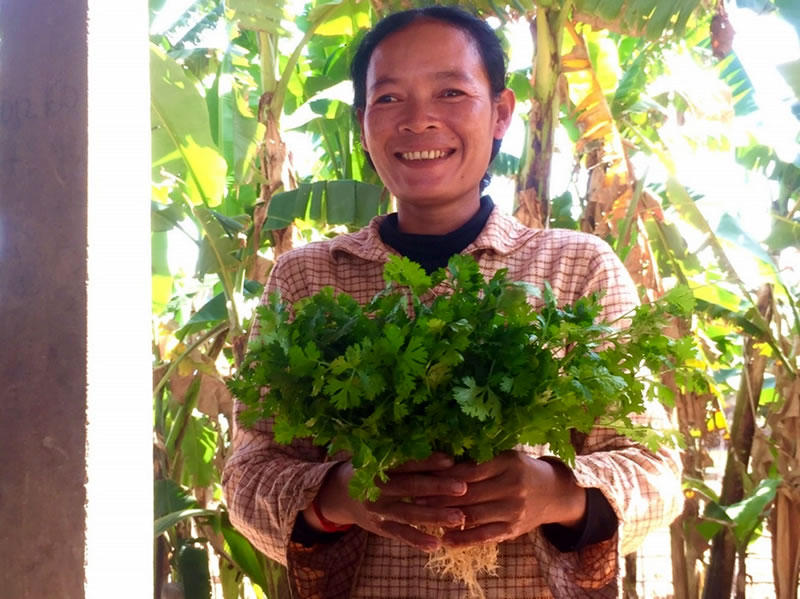
Ms. Bopper wears a broad smile on her first shipping.
As you can see in the video clip, Ms. Bopper utilized the reservoir created with the support of JVC and JVC’s training to develop her home garden. I hope the reservoir we dug in March will also be in good use in the future…
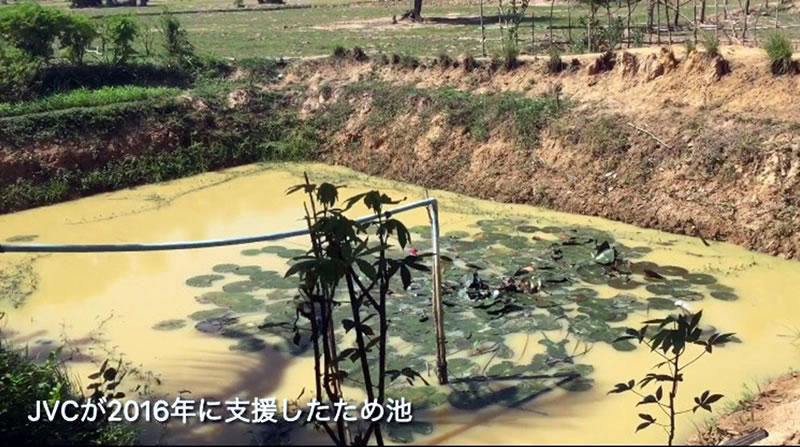
This reservoir was made with the JVC’s support in 2016 (a scene of the video).
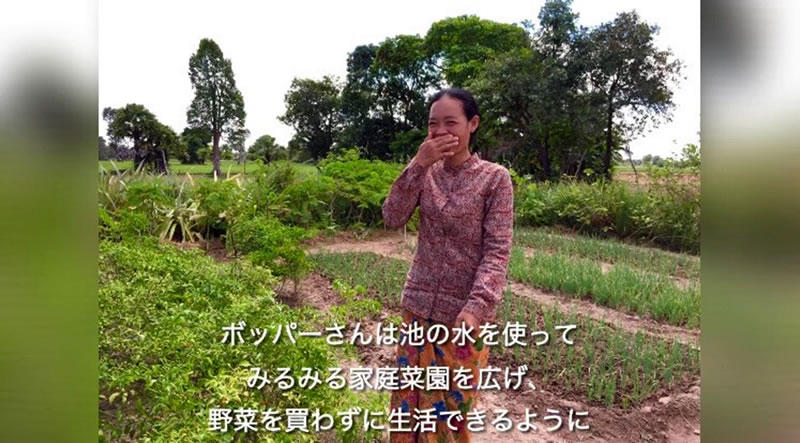
It is hard to believe that she used to grow only lemongrass here (a scene of the video).
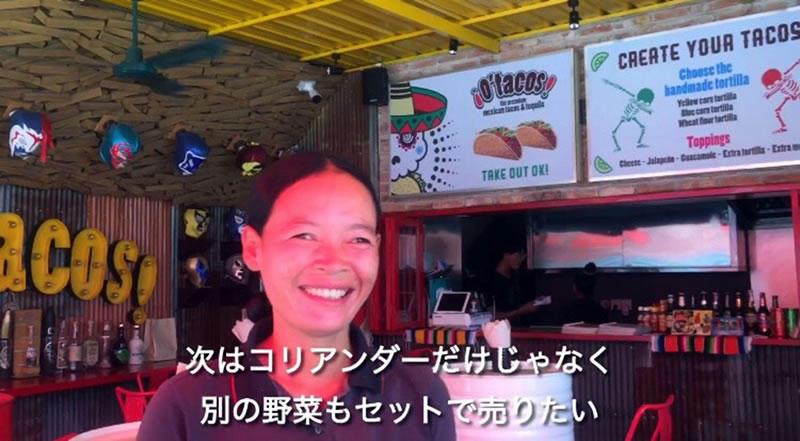
Please look at her great smile and her comments after she completed her first shipping! (a scene of the video).
After the first shipping
As of October 2019, the coriander is regularly ordered every week and is used in the taco dishes, one of the well-known menus of the restaurant.
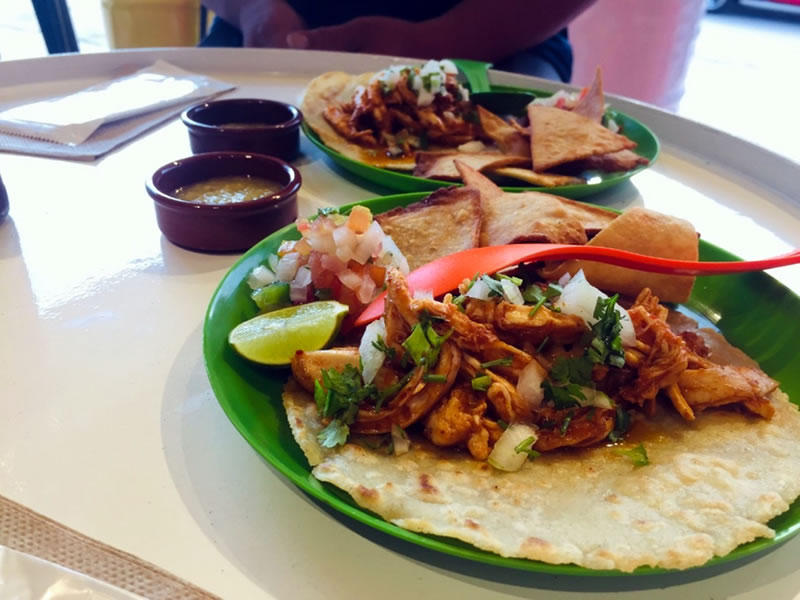
You can enjoy this dish at O’tacos in Siem Riep!
We visited the restaurant and tasted the dishes to know how the coriander is used. Ms. Bopper and Ms. Chomno both started with knowing what Mexican tacos are. They seemed to be cautious when they saw unfamiliar dishes in front of them (I understand them very well because I felt the same when I tried Cambodian food LOL). But in the end they were very satisfied, saying “Yum!”
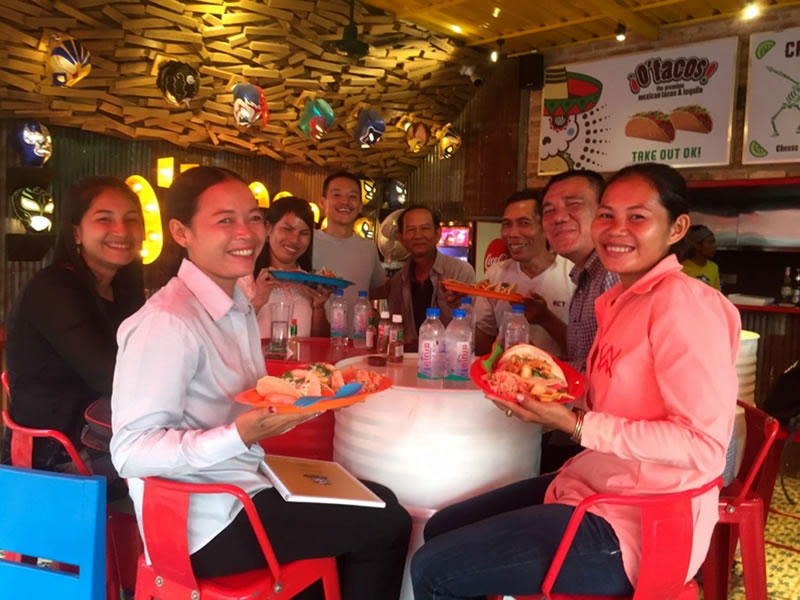
At the restaurant where their coriander is used.
Another purpose of the visit was to let Ms. Bopper and Ms. Chomno hear directly from the restaurant. If the restaurant manager explains to them why he wants to buy their coriander, they will understand better than if I or other JVC staff explain.
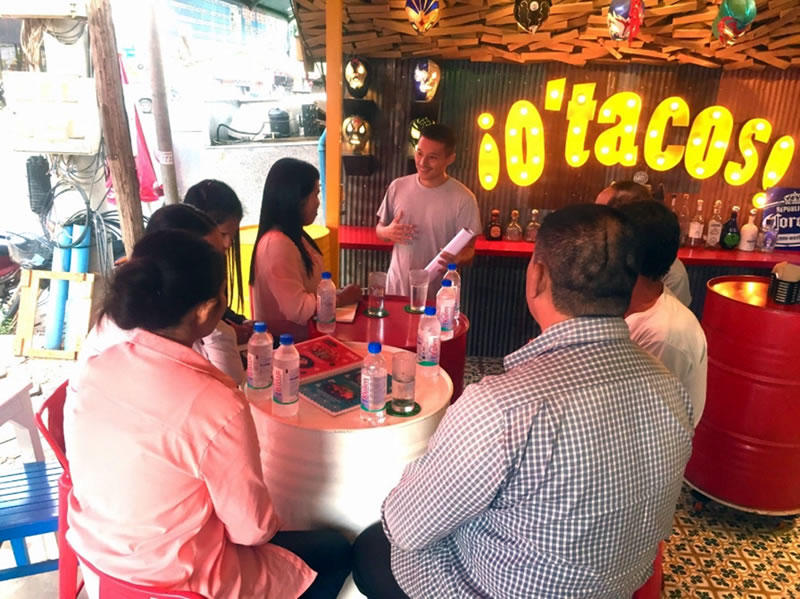
The restaurant manager explains why he wants to buy domestic products that were grown by producers whose faces are visible and are using natural compost.
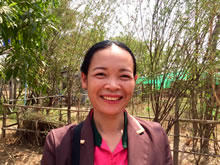
Ms. Bopper.
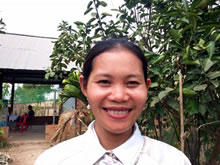
Ms. Chomno.
Ms. Bopper and Ms. Chomno gave positive comments; “It was my first time to grow coriander so I faced some difficulties, but now I am enjoying it. I was worried whether anyone would want to buy them, but I am glad now since I got a good result”. Moreover, someone who heard that Ms. Bopper was growing coriander began to pay a visit to her house to buy her coriander. The person was found to love coriander so much. This kind of unexpected encounter is one of the joys of our work.
O’tacos places an order of other vegetables as well. We try growing them in the JVC’s test farm now. We hope to transfer the cultivation of these vegetables to interested farmers in our project area.
Possibilities expand by cooperating with partners
I feel that possibilities can expand if we have partners who care about, for example, using natural compost, domestically grown vegetables, and buying from producers who live with financial difficulty. Roselle Stones Khmer is one of such partners, who handles dry herbs in Cambodia. Ms. Nishiguchi, the president, visited the JVC’s project site and said,
“This place is like a mountain of treasure. It’s fascinating to know that there are wonderful farmers who grow herbs in such a beautiful way. I would love to work together with them.”
I remember very well how everyone looked flattered yet happy when they heard “a mountain of treasure”.
There are indeed so many challenges facing people who are living in a village, but I am somewhat encouraged when I see optimistic farmers who take on the challenges, and partners who are willing to buy products from them. A new wind will blow in the village, if a bidirectional relationship is established between the people who grow good products and those who are willing to buy their products for better ingredients. They are “partners”, differing from a one-directional relationship between producer and buyer.
I will report an update in the blog when I see an increase in the shipping of vegetables. Thank you for your continuous support to Cambodia projects.
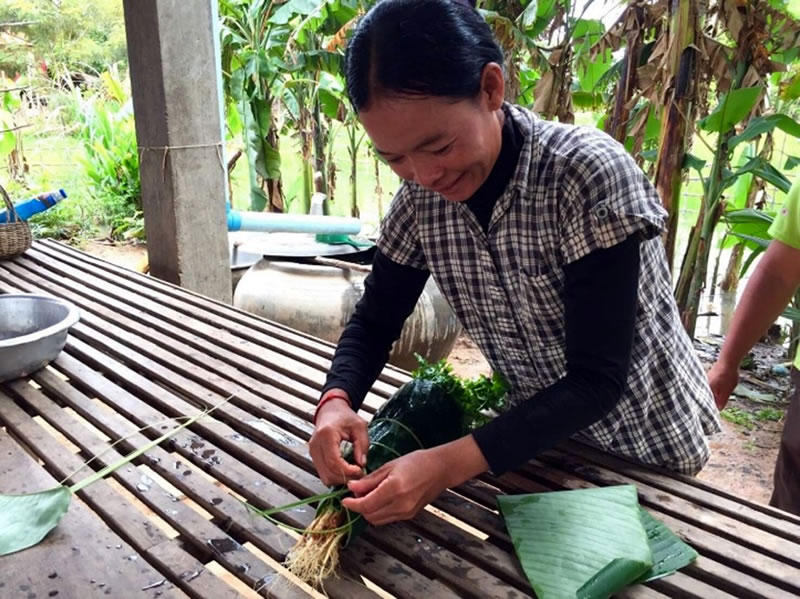
We recently changed the package material to eco-friendly banana leaves.
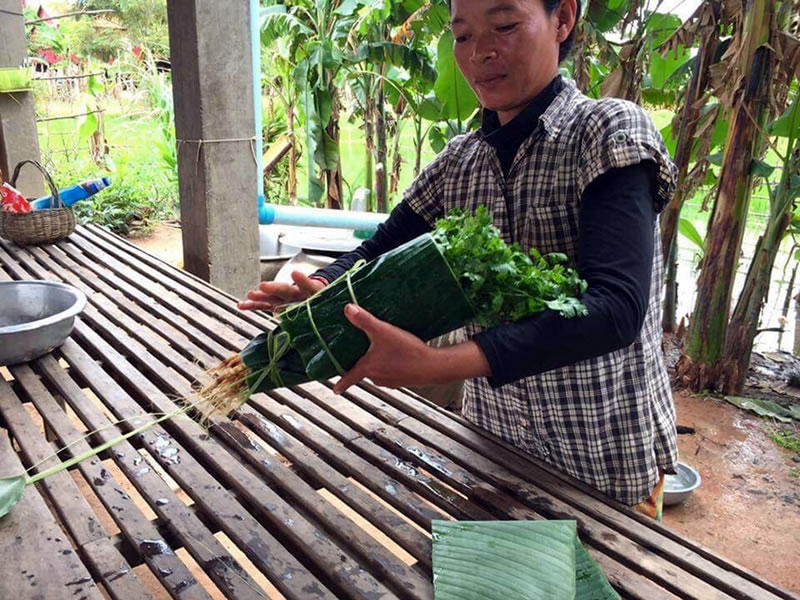
An episode about the packaging
At first they thought that it would be more stylish to use plastic wrapping when selling in the city. But when I showed an article on the Web and explained that using banana leaves is the latest packaging style, they said, “That’s so interesting!” and agreed to use banana leaves. Since banana leaves are commonly used to steam rice sweets, they thought it was inappropriate to use them for ‘high-end’ packaging. To those who live in the city or in Japan, don’t you think banana leaves are more attractive as packaging materials? You will see how ordinary life in the village can be very appealing if you change your perspective just a little. I hope to tell about this to the people in the project site much, much more.
Share This: